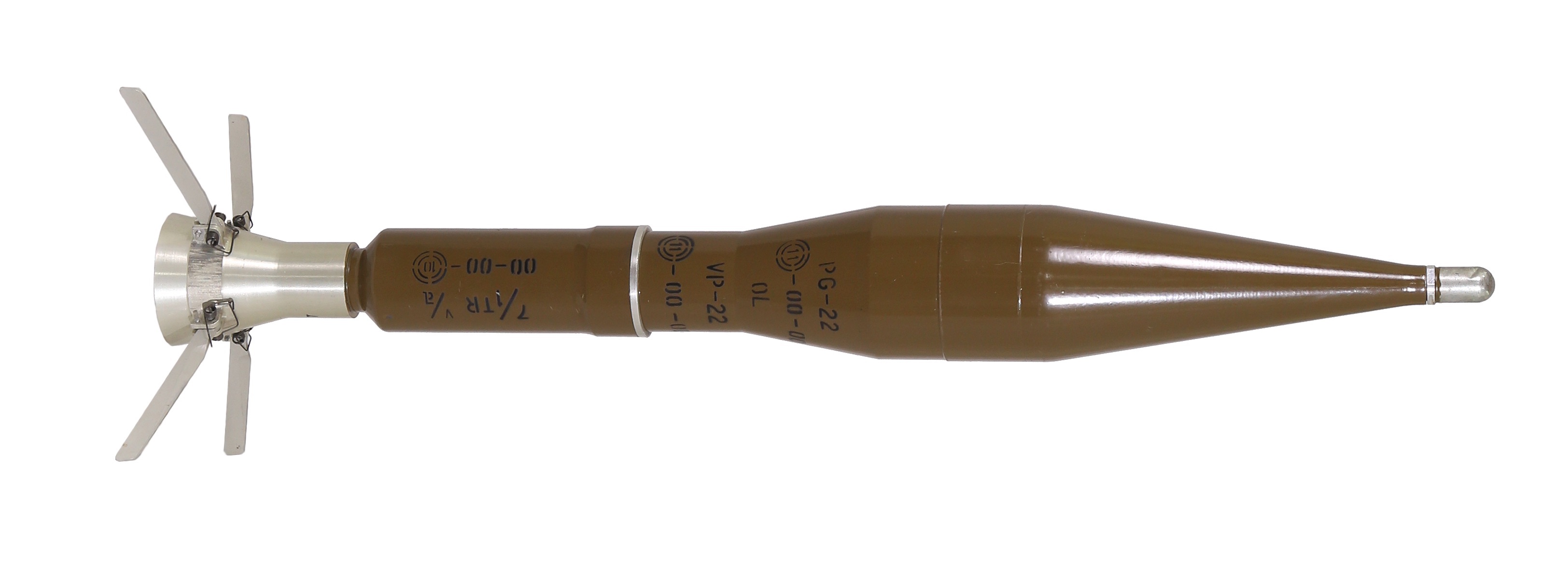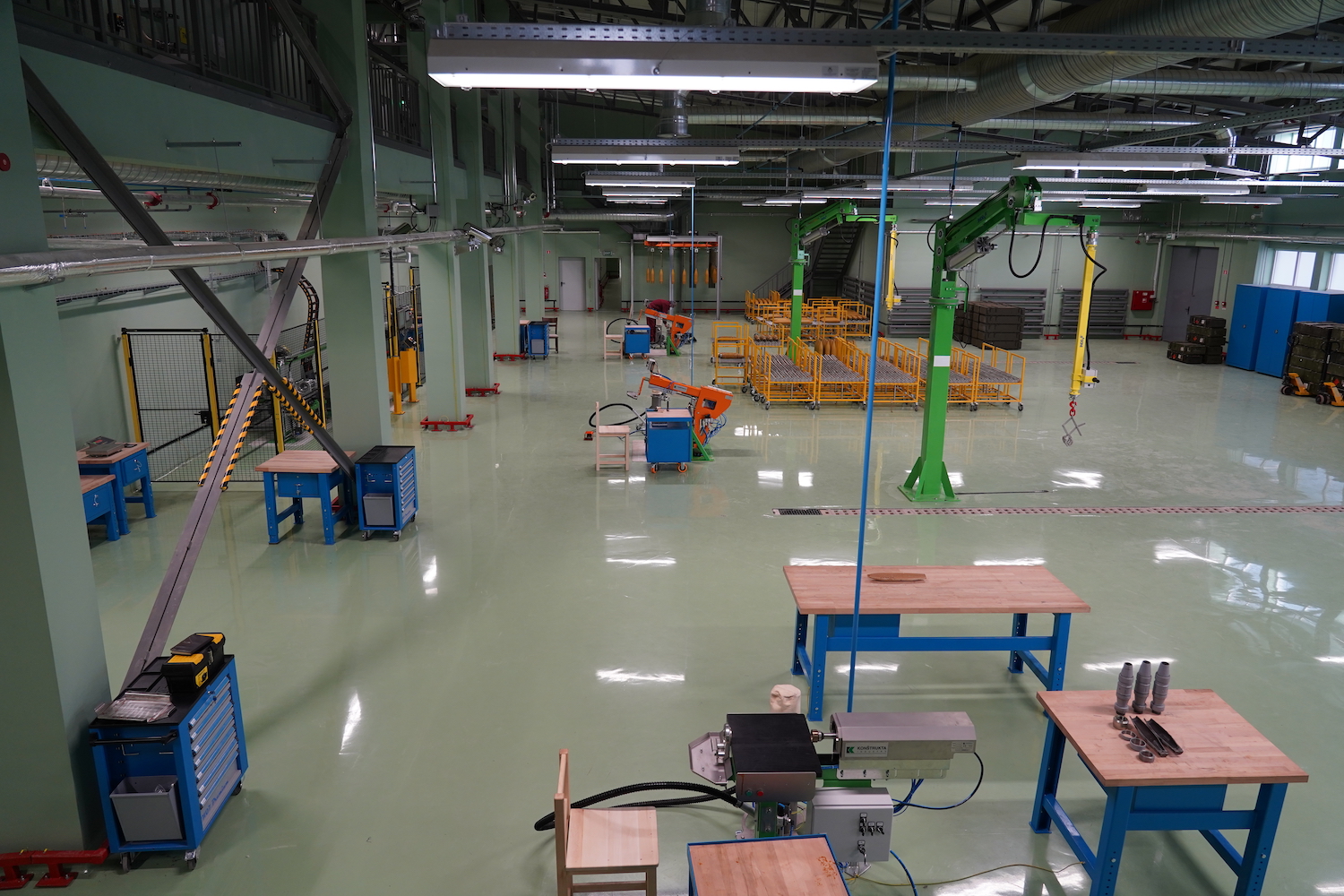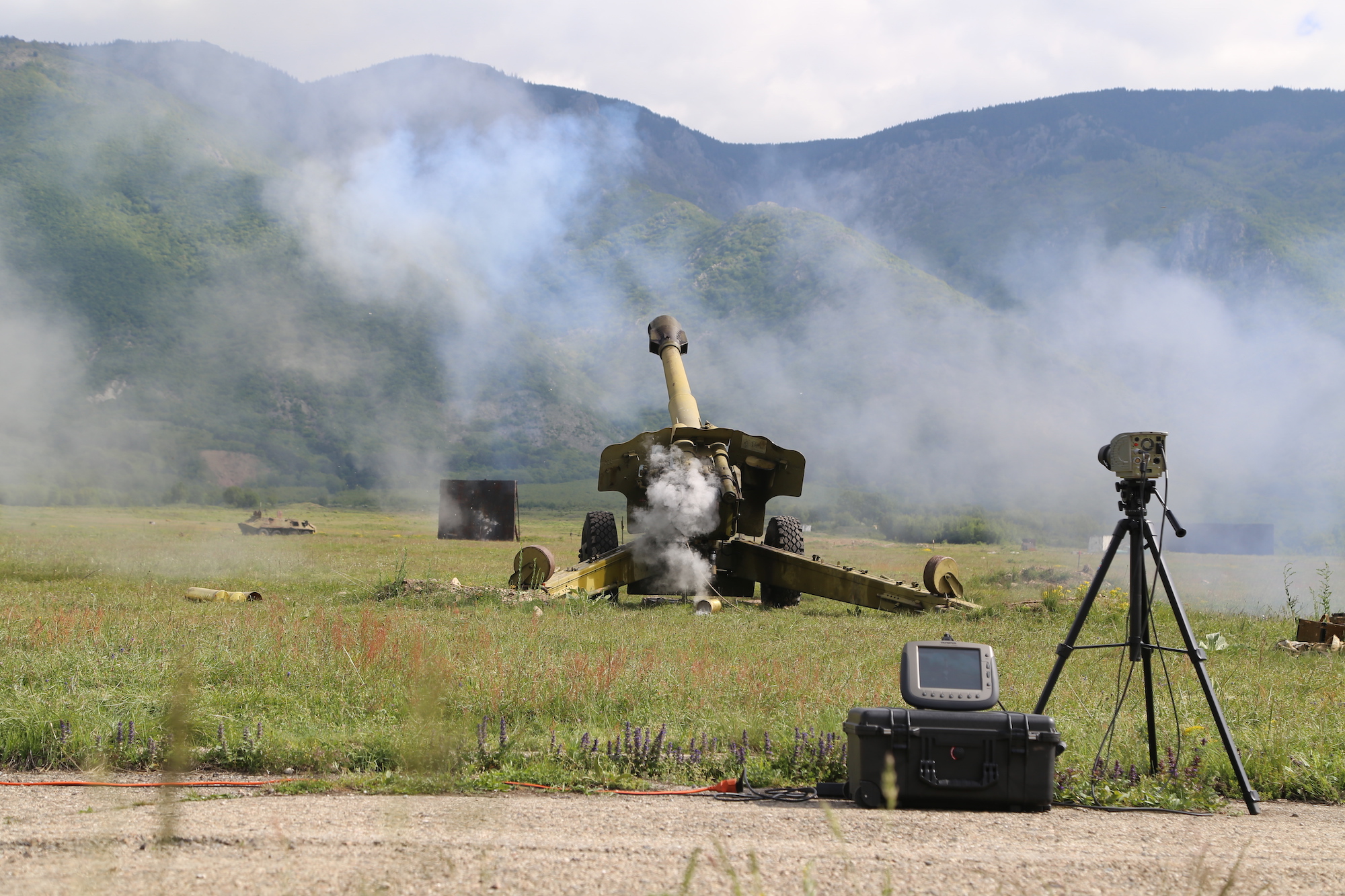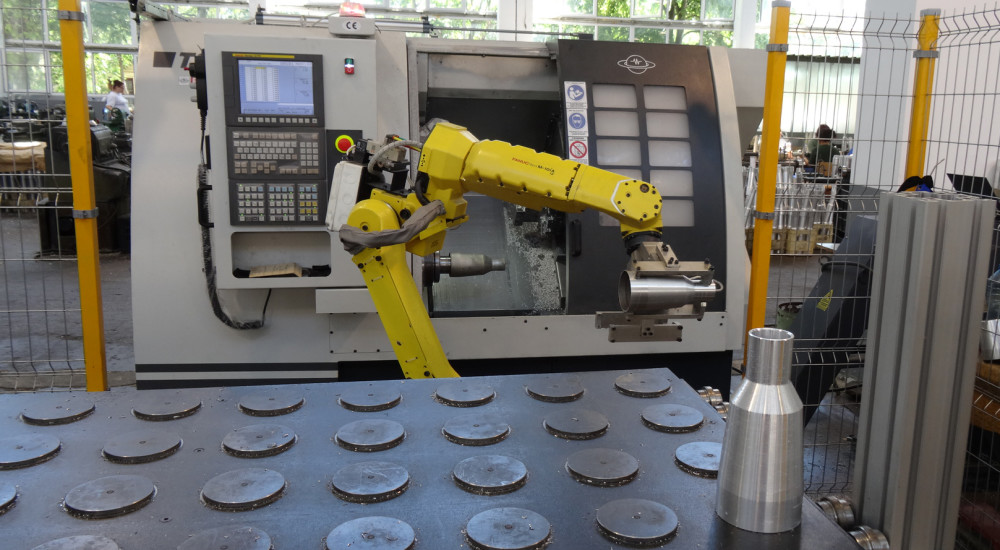Bullspike Anti-Tank Grenade Launcher: Bulgarian VMZ EAD company willing to enter the Polish Market.

Bulgarian Bullspike launcher, manufactured by the VMZ EAD company with its seat in Sopot, is being offered within the framework of the Grot programme, aimed at the acquisition of light anti-tank grenade launchers for the Polish military. The proposal assumes that the manufacturing process would be transferred to Poland. It would also involve domestically-manufactured components and further development of the launcher, to prepare a variant with guided projectiles.
Bullspike – RPG-22 in the 21st Century
The Bulgarian-made Bullspike launcher is a development of the license-manufactured RPG-22 system, manufactured by the state-owned VMZ EAD company. The launcher has undergone major modifications in its current form. It became far more ergonomic and it is better suited for the use of contemporary targeting devices. In the technical dialogue concerning the Grot programme, the Bullspike offer has been submitted by the Metalexport-s sp. z.o.o. company, representing VMZ EAD in Poland.
The launcher weighs 3.4 kilograms in total, together with the 72.5 mm PG-22 projectile. It is 780 mm long. The standard Bullspike-AT projectile features a shaped-charge warhead that offers a penetration capability of 400 mm, along with a rocket motor and a piezoelectric VP-22 fusing unit. The rocket motor burns all of its fuel when the projectile is in the barrel. This minimizes the impact that it could potentially have on the shooter. Four stabilizers have been installed in the rear section of the projectile.

The weapon may be fired from inside of the buildings. It is simple to use and reliable. Effective direct fire range is defined as 350 meters. The projectile weighs almost 1.5 kilograms. Its initial velocity is said to be around 133 meters per second. A variety of sights may also be installed on the launcher. The launcher can be readied for use in 8, up to 10 seconds. The Bullspike launcher is reusable. Nonetheless, reloading shall take place at a facility that has a proper license granted to do so, by the manufacturer. Obviously, solution as such cannot be applied in combat conditions, but it can generate savings in the training process.
Alongside the anti-tank variant, Bullspike-TB (thermobaric) and Bullspike-OP (frag-HE) versions are available as well. The projectile may be selected adaptively, depending on the threat (armoured and non-armoured vehicles, fortified buildings, infantry).
Bullspike launchers have been a subject to major export sales. They are used by the Armed Forces of several nations. The simple design and the fact that the system is manufactured in major quantities both translate into a low price per-unit. The above applies to license manufacturing as well.

The Bulgarian entity is developing a modernized variant of the grenade launcher as well, remaining in touch with the end-user, and taking the end user’s feedback into the account. The production launch with regards to the new Bullspike-ATM variant is expected to take place in 2020. The projectile is going to be redesigned - this applies both to its warhead, as well as to the motor.
Bullspike-ATM would be fitted with an anti-tank (shaped charge) warhead offering penetration capability of 500 mm. The projectile would also utilize a more powerful rocket motor - this would extend the maximum range to 500 meters. The rear portion of the projectile would be redesigned, and the number of the fins would be increased up to 6. The weight of the launcher itself would be higher. Still, it would be lower than 4 kilograms, projectile included.
Bullspike in Polish
As the Bulgarian manufacturer is taking part in the Grot programme, the company has signed an industrial collaboration memorandum with the Telesystem-Mesko company based in Lubiczów, near Warsaw. The entity is well known for its developments in the field of seeker systems, designed for the Grom and Piorun anti-aircraft missiles manufactured by Mesko. The assumption made is to achieve full polonization and further development of the Bullspike system in Poland. A relevant scope of the transfer of technology has been hence proposed. The engineers of the Telesystem-Mesko entity have already developed a preliminary concept, thanks to which the launcher in question could employ projectiles with a guidance system. Telesystem-Mesko has prepared a polonization concept for the launcher. The company has also developed a concept that uses the capabilities offered by the Polish industry for further development of the weapon’s capabilities (Mesko and PCO playing the primary role here).

The offer assumes that the launcher (munition included), in any variant, would be manufactured entirely in Poland. Autonomous domestic manufacturing and development capacities are to be established (gradually) as well. The Bulgarians have already approved this scenario. An adequate decision has been made by the VMZ EA board of directors when it comes to the company’s readiness to share the know-how with the Polish defence industry. The board is authorized to make quick business development decisions, including the ones on the transfer of technologies, joint undertakings, and participation in the European Defence Fund-driven consortia. Relevant cooperation projects involving Telesystem-Mesko have already been launched. This confirms the approval of know-how transfer.
Both Telesystem-Mesko, as well as VMZ EAD representatives, point to the Mesko facility based in Skarżysko-Kamienna, when it comes to the possible main integrator and manufacturer of the weapon in question. The business mentioned above belongs to the PGZ Group and Mesko has already been widely involved in manufacturing of missiles and rocket-powered weapons. Furthermore, for quite some time now, Mesko and Telesystem-Mesko have been involved in tight cooperation. Should the manufacturing capacity, with regards to Bullspike, be established in Poland, a need would also emerge to prepare a local network of cooperating parties, involving other entities. That network shall also include ammunition-focused entities of the PGZ Group. Thanks to the above, the majority of the funds allocated to the Grot programme would be used to support the domestic network of manufacturers and the local R&D potential.
The Polish engineers from Telesystem-Mesko want to focus, primarily, on the integration of the launcher with the Polish-made targeting systems. Thanks to the above, the launcher could be effectively employed in a myriad of weather conditions, at night and during the day.
Telesystem-Mesko representatives suggest that sights manufactured and designed in Poland could be the primary option here, including the products of the PGZ’s PCO S.A. company. PCO S.A. is currently delivering the PCS-5M sights for instance, broadly employed together with the Polish RPG-7 grenade launchers. It is also possible to integrate foreign sights on the launcher, depending on the user requirements.

Telesystem has also developed a concept of a Bullspike variant that would utilize a guided projectile. In practical terms, the above would translate into a gyro-fitted projectile with a guidance system. This would increase the weapon’s capabilities in the domain of acting against moving targets. When aiming the weapon against a moving object, its movement would be replicated by the gyro, and then by the projectile itself.
The Predicted-Line of Sight (PLOS) concept adopted in case of the Swedish NLAW system has been similar. NLAW is employed by the British or Finnish Armed Forces at the moment (including the British Army units deployed in Poland). Telesystem-Mesko is willing to utilize its experience gathered during the development of Piorun and Pirat missiles and Krab howitzer and Rak mortar PGMs, in the process of creating a guidance system for the Bullspike launcher. This should accelerate the work.
A Beginning of a Broader Cooperation?
The Bulgarian VMZ company has not been well known in Poland so far, despite the fact that it is one of the primary players of the European defence sector. VMZ specializes in manufacturing and developing ammunition based on technologies having their roots in the East. This, along with the fact that Bulgaria is a NATO and EU member state with all of the required approvals, makes the products offered by VMZ enjoy a good reputation - also among the NATO member states and partners who, for obvious reasons, may not be interested in procuring their weapons in Russia.
VMZ has been present on the market since 1936. It is an entirely state-owned facility that employs 4 thousand employees, with another 7 thousand jobs being maintained in a subcontracting role. The company has managed to secure export sales with a value of USD 800 million, between 2017 and 2019. Throughout the period between 2016 and 2020, the company has invested almost 100 million dollars, to improve its manufacturing potential. Innovation and Development division at VMZ plays the key role here. The division in question only deals with the development of new solutions and the enhancement of the existing products. The Innovation and Development personnel also remains ready to assist the company when manufacturing processes are launched, with regards to the newly developed elements. The division employs experts that have many years of experience in the area of technology implementations and transfers. This, when fused with governmental support and positive relationship with the NATO/EU, is a condition that is required to establish good cooperation in the area of initiatives involving the sharing of the know-how.

VMZ lists at least a couple of products, when it comes to the company’s potential presence in Poland, with those products having the potential of being used by the Polish Armed Forces. The Bulgarian entity has also declared its willingness to participate in industrial cooperation, seen in the provision of licensing and components for the equipment already manufactured in Poland, along with the relevant know-how that would make the offer far more attractive. The above cooperation may also apply to the manufacturing of products destined to be exported.
VMZ offers RPG-7 projectiles with a better penetration performance (including ones that use a tandem-warhead that is capable of penetrating 500 mm of RHA protected by ERA), as well as other types of munitions, including ones with frag-HE, thermobaric and training warheads. The projectiles in question could be used both in the Polish RPG-7 launchers, as well as in other RPG-7 family weapon systems, with manufacturing being launched domestically, in Poland. A concept has also been created to develop a guided projectile for the RPG-7 launcher, in collaboration with Telesystem-Mesko, offering an effective range exceeding 2.5 kilometers. The Bulgarians are also willing to work with Telesystem on precision-guided artillery munitions.

VMZ also offers other types of armament, including 57 and 80 mm unguided rockets, as well as 122 mm rockets designed for BM-21 Grad-class launchers and derivatives. VMZ has developed warheads for the latter that, depending on the prefabricated components used, can be optimized to act against a myriad of armoured targets. The Bulgarian company has also developed a proximity fuse for the 122 mm rockets. The former two types of rockets could be used to replenish the stock of the Polish Army Aviation units, flying the Mi-8/17 and W-3 Sokół helicopters. VMZ also offers the 125 mm APFSDS-T sabot rounds with a tungsten core, dedicated for the T-72 MBT, with penetration capability of 460 mm.
The Bulgarian company claims that it is willing to further develop its potential in the PGMs (laser-guided munitions included) and UAV sectors. Polish defence sector companies have already created a major portfolio in the aforesaid domains. Cooperation as such could potentially result in the emergence of several products meeting the requirements of the Polish and Bulgarian Armed Forces, and potential third market customers as well.
The article has been prepared based on materials provided by VMZ



